




Let’s start with a few quotes:
“The Eastern Ethiopians, [ ie. Sudras ] differed in nothing from the other
Ethiopians, save in their language, and the character of their hair. For the
Eastern Ethiopians have straight hair, while they of Libya [Africa] are more
woolly-haired than any other people in the world.” Herodotus
The appearance of the inhabitants, too, is not so far different in India and Ethiopia; the southern Indians resemble the Ethiopians a good deal, and, are black of countenance, and their hair black also, only they are not as snub-nosed or so woolly-haired as the Ethiopians; but the northern Indians are most like the Egyptians in appearance. " Arrian, `Anabasis Alexandri, Book VIII (Indica),' Chapter 6, tr. E. Iliff Robson (1933)
‘ F. Willord states: ‘It is certain that very ancient statues of the Gods of India have crisp hair and the features of Negroes. Some have caps… Others indeed seem to have locked curles…But this will not account for the thick lips and the noses of the ancient images; nor can it be reasonably doubted that a race of Negroes formally had power and preeminence in India. In several parts of India the mountaineers still have resemblance to Negroes in the countenance and hair which is curled and has a tendency to wool.’ [Asiatick Researches, Vol. III, London].
I know some may be asking; what does this seemingly modern fashion have to do with ancient concepts. Hopefully, I will connect the dots and answer that question.

One Sign~One Priesthood~One People
It was about 10 years ago that I finally committed to growing my hair in a style called Locks. It was shortly thereafter that I begin to see the difference this hairstyle made in my life. I found out soon enough the word dread attached to locks was given to those tresses by opponents of my recent ancestors who had lived in he Caribbean. Called by the ignorant and racist as “…those dreaded locks” because all those who wore them were considered rebellious and unmanageable by those who sought to keep them enslaved. I knew this was a modern example of the power of these curls so I began searching for the original meaning of locks and their spiritual significance in my quest I have added plaits and braiding since they are interchangeable in ancient writings.
There is nothing that we do that does not have a spiritual underpinning, a foundation or root that connects that original meaning to the Creator and or the first people who communicated with that Creator. We, being in the image a likeness of the Creator have been endowed with internal and external markers that allow us to communicate, emulate, and illuminate the actions of the One that created all of us. Somehow the original and seemingly primitive methods of that communication have been lost or replaced by methods that are shadows of the original or those original methods are now marginalized by making them fads within popular culture without the knowledge and root of divine consciousness.
"We are the people of every book. We are the single tread of civilization that courses through all cultures."
Now, I know that may sound ‘new agey’ but bear with me. This is not just true with locks but locks, in my opinion is a sign of the original priesthood – just as braids and plaits are a sign of royalty and power and molding your natural African hair is as a sign of rulership and a connection to the supreme ruler.
The Bible says:
The word used for “Nazarite” is based upon the Hebrew verb “rzn”, transliterated as “Nazar”, which means “to dedicate, consecrate, and separate”. It is commonly used to indicate that someone is living as a Nazarite. The Hebrew “ryzn”, noun transliterated as “Naziyr” means “consecrated or devoted one” - it also means “untrimmed”, as in a vine.
Here is a recent historical perspective on the aspects of ‘locking’.
“In the West, the Nazarite is most widely known for developing Dreadlocks. In the East, Yogis, Gyanis and Tapasvis of all sects are the most famous bearers of Dreadlocks.
Dreadlocks, then are universally symbolic of a spiritualist's understanding that vanity and physical appearances are unimportant. The counterpart to Dreadlocks is the shaven head, which has the same aim: disregard for vanity associated with physical appearances. Usually we find that spiritualists whose religious path includes elaborate rituals tend to embrace the shaven head technique as it affords a level of ritual cleanliness, while those mystics who adopt meditative or otherwise non-ritualistic paths prefer to disregard the hair altogether and thus develop Dreadlocks.
Dreadlocks are more than just a symbolic statement of disregard for physical appearance. Both Eastern and Western Traditions hold that bodily, mental and spiritual energies mainly exit the body through the top of the head and the hair. If the hair is knotted, they believe, the energy remains within the hair and the body, keeping a person more strong and healthy.
An excellent example from Western tradition is biblical Sampson, whose unsurpassed strength was lost when Delilah cut off his *seven* locks of hair. In classical India, all students on the spiritual path were directly enjoined by their scriptures to develop Dreadlocks as a means to detach them from physical vanity and aid them in the development of bodily strength and supernatural mental and spiritual powers.[1]”
I have to disagree with a point of vanity…to have locked hair was a sign of beauty and the beams that shone as a symbol from illumination, revelation a knowledge of the creator to is creation. What about locks in different parts of the world where they had no biblical tradition? They had a sun-priest tradition.
Was this understanding in all of us? Our cousins the Meso-Americans:
"On the summit he was received by six priests, whose long and matted locks flowed disorderly over their sable robes, covered with hieroglyphic scrolls of mystic import. They led him to the sacrificial stone, a huge block of jasper, with its upper surface somewhat convex." (William H. Prescott, History of the Conquest of Mexico)[2]
The Mau Mau of Kenya wore the hair in lock as a symbol of power and freedom in their bid to rid the nation of colonialism.
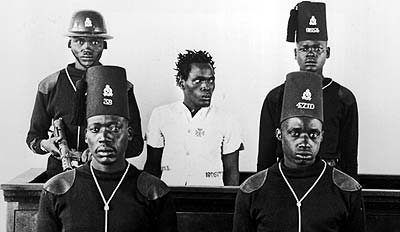
“…the first Rasta dreadlocks were derived from the "dreaded locks" of the Mau Mau, largely Kikuyu freedom fighters against British colonialism in 1940s Kenya.”
There is a very Biblical precedent as seen above as well as a pre-Biblical picture. Samson, Samuel and John the Baptiser all wore locks in their Nazarite vows.
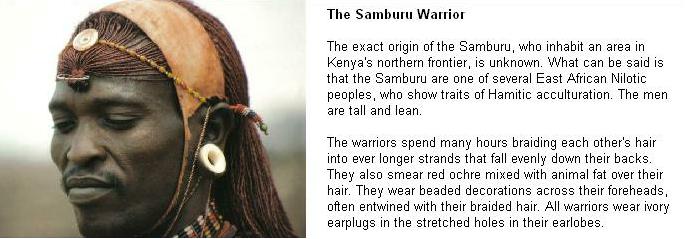
Judges 13:6-7 (NIV)
“Then the woman went to her husband and told him, "A man of God came to me. He looked like an angel of God, very awesome. I didn't ask him where he came from, and he didn't tell me his name. But he said to me, 'You will conceive and give birth to a son. Now then, drink no wine or other fermented drink and do not eat anything unclean, because the boy will be a Nazirite of God from birth until the day of his death.”
John the Baptist -
“According to Jewish law the child was circumcised on the eighth day and named. Friends and neighbors thought he should be name Zacharias after his father, but his mother insisted his name was to be John, when the father was asked, he still being speechless, took a writing tablet and wrote his name should be John. He was set apart as a Nazarite, according to the angelic injunction (Luke 1:15). Little is known of John's youth from that time until his ministry except for one verse, "The child grew and waxed strong in spirit and was in the deserts till the day of his showing unto Israel" (Luke 1:80).”
This is also carried out in the modern Ashkenazi [German] tradition of having side-locks as their unacknowledged homage to this ancient original African tradition, although they do not accept the African origins.
“The Torah says, "You shall not round off the peyos [locks] of your head" (Leviticus 19:27). The word peyos refers to sideburns -- i.e. the hair in front of the ears that extends to underneath the cheekbone which is level with the nose (Talmud - Makkot 20a). The Talmud explains that this law only applies to men, not to women Hair is also a symbol of vanity, a preoccupation of how one looks. The prohibition against cutting off the peyos reminds a person to de-emphasize his looks, and instead depend on intellect and good character. From a mystical perspective, peyos [pious] separate between the front part of the brain which is used for abstract thought that can be used for holiness, and the back part of the brain that governs the body. [3]
Here is the Ashkenazi version of locks. He side lock curled just above the ears, but as you can see it is not locked it is curled and can easily be combed out.

Hasidic Curls
This can’t be a coincidence. I vacillate between hair styles because the braid and the lock have the same significance. You saw how the side curls were thought to be an antenna for spiritual thought.
POLYNESIA “These hairstyles are termed 'cornrows.' Among the Polynesians of the Pacific, the first time a boy's hair was cut marked his coming of age. It was also a way in which he was now differentiated from women. Hair was thought to contain the manna or power, and so the cutting of hair was a risky business.”[4]
For years we were told we had to be careful who cut, combed or braided our hair, because depending o the person they could affect your thoughts was it an ‘old wives tale’ something greater. Here is the same thing in Polynesia, so you see it is an ancient tradition. The Polynesian, Micronesians and Melanesians people are of African descent just like the Hawaiians.

When I decided to lock my hair or rather let it do ‘its own thing’ I was met in my family and religious community with scorn ridicule and consternation. This was 10 years ago when the ‘fad’ of locks had not fully taken off – I met very few people in my town who understood the significance of our follicular reawakening.
In my mind, it was similar to our coming of age in the sixties and donning our natural hair. The older community was outraged, but we knew we had to make a stand by adopting an African outlook and proclaiming, “black is beautiful.” We needed to proclaim that beauty outwardly and inwardly and one of the significant outward changes was in our hair, dress and names. We wore Dashiki’s and other pseudo-African clothes along with braiding, corn-rowing or wearing our hair natural.

Angela Davis
We have progressed in any ways since that time and one way is getting back to the hair styles to the original African man and woman. Here is an example of elaborate braiding with plaits and extensions! So, brothers leave us alone about putting on some extra hair it is the African tradition! What we have to do is start selling the hair and cut out the Korean as the middle man.
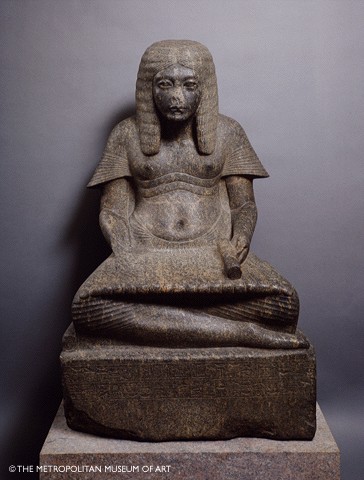
Scribe of Haramheb


1890

Ancient Egypt
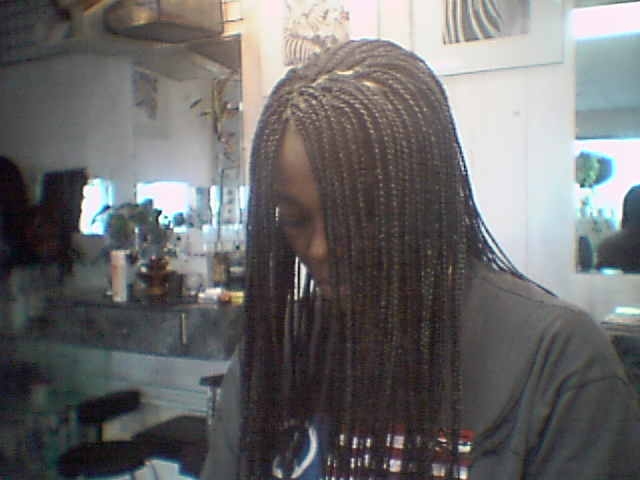
sista' from the 'hood
We have always had a hair connection, but this essay is dealing with the significance of the hair experience in relating to the priesthood.
The Plait
![]()
Now a lock can be several different things like a plait. Here is an example of the African tradition and the biblical story.


Namibia this century Ancient Egypt

Side locks
All freeborn children wore plaits until they reached manhood. All Pharonic children wore plaits.[5] The Pharonic children were seen as ‘sons of God’ and the plait.
“Khonsu is the son of god Amun and goddess Mut. He is sometimes depicted as a child with a plait in his head, or a falcon-headed man.
Khonsu was connected to the moon, time and knowledge in the Egyptian tradition. His father Amen is represented by the Sun and was representative of the ‘Divine Son’.

Khonsu, was at first thought to have been derived from the elements kh (placenta) and nesu (king), as a personification of the royal placenta, but it is now generally believed to be based on the verb, khenes, meaning "to cross over" or "traverse", related to "he who traverses [the sky]". [6]
He was later considered the ‘god [neteru] of healing by the Egypto-Greek rulers of Egypt the Ptolemy’s. So, now we have an ancient African precedent for the plait or lock let us look at the Biblical application of this sacred lock of hair.
The internal example of the lock or side plait.

Numbers 6:5
All the days of the vow of his separation there shall be no razor come upon his head until the days be fulfilled in which he separateth himself unto the Lord, he shall be holy and shall the LOCKS of the hair of his head grow.
Leviticus 19:27
Ye shall not round the corners of your head; neither shall thou mar the corners of thy beard.
Ezekiel 8:3
And he put forth the form of the hand and took me by a LOCK of mine head.
Song of Solomon 5:11
His head is as the finest gold. His LOCKS are bushy and black as a raven.
Song of SOLOMON 5:2
My head is filed with dew, and my LOCKS with the drop of the night.
Heru the son of Auset and Ausar, was held forth as the role model for all princes. The princes were distinguished by a badge hanging from the side of the head, which enclosed, or represented the lock of hair symbolic for a ‘Son’, in initiation of the youthful Heru [Horus]. [7]
Did Moses the so-called son of a Hebrew then son of an Egyptian princess pulled out of the Nile wear a lock like this, YES! If, he was considered her son that was one distinction he needed to possess. Let us look at the Biblical equivalent and the layered story of Sampson and see what is hidden in plain sight.
Judges 13.
“A certain man of Zorah, named Manoah, from the clan of the Danites, had a wife who was sterile and remained childless. 3 The angel of the LORD appeared to her and said, "You are sterile and childless, but you are going to conceive and have a son. 4 Now see to it that you drink no wine or other fermented drink and that you do not eat anything unclean, 5 because you will conceive and give birth to a son. No razor may be used on his head, because the boy is to be a Nazarite, set apart to God from birth, and he will begin the deliverance of Israel from the hands of the Philistines."
Sampson’s fathers name was said to be Manoah [Ma’Noah] which according to the Concordance means ‘rest’ but, so does the name Noah with out the Ma or M prefix. So something isn’t jiving, if you know what I mean. M is the prefix for son in many African cultures. The great and mighty Meru of Kenya use a prefixed M to represent ‘Son’ or ‘Son of’, just as the Egyptians used M or Ms or Mose to mean the same. Noah was 10 generation in the line of the biblical Seth. Seth was the one sent as a replacement for the slain Abel. The Bible says Seth was made in the image of his father Adam. His name can mean ‘appointed or tumult’.
In Hebrew the M prefix means ‘from’ the name Ma or Mi are interchangeable in a consonantal language. So the name Ma’Noah could mean ‘From Noah’.
Manoah, the father of Sampson was from Zorah/Zerah which is the same name as Sarah [Sur’a] the wife/sister of Abraham. The Bible says her name means princess. Samson’s mother remained nameless as did his wife. Now we a possibility Sampson having come from Noah down through Sarah, making him of Ethiopian stock with an Egyptian curve.
“In the verse following the one where this name is conferred, it is declared of Sarah that "kings of peoples shall be of her" Gen 17:16.
The name Sampson is very interesting and I believe it relates to Anu/ON or the Greek Heliopolis.
“Derived probably from shemesh, "sun" with the diminutive ending -on, meaning "little sun" or "sunny," or perhaps "sun-man"; Sampson; Latin and English, Samson): His home was near Bethshemesh, which means "house of the sun." Compare the similar formation shimshay (Ezr 4:8,9,17,23).

Why would the Bible reference Samson the little sun or sun-man living in the house of the Sun?
“He shall also break the pillars of Beth-shemesh[ House of Sampson/Sun], that is in the land of Egypt; and the houses of the gods of Egypt shall he burn with fire.”
A Pillar has always been representative of a kingdom [phallic] usually Pharonic, breaking the pillars of the sun or house of the sun or Samson’s house in the land of Egypt.
“The Hebrews called it On (Genesis xli., 45, 50; xlvi., 20), Aven (Ezekiel xxx., 17), and Bêth-Shemesh (Jeremiah xliii., 13); this last name is an exact translation of the Egyptian per Ra, "house of the sun," which was also a designation of Anu.
The Copts have preserved the oldest name of the city. A Coptic bishop of this place was present at the Council of Ephesus. The city of Anu seems to have become associated with the worship of the sun in prehistoric times. Already in the 5th dynasty its priesthood had succeeded in gaining supremacy for their religious views and beliefs throughout Egypt and from first to last it maintained its position as the chief seat of theological learning in Egypt.
The body of the Aged One, a name of Osiris, reposed in Anu, and there dwelt the Eye of Osiris. The deceased made his way to Anu, where souls were joined unto bodies in thousands, and where the blessed dead lived on celestial food for ever.”[8]
OK Let’s connect some dots….
Sounds like Egyptians symbolism hiding somewhere to me! The symbol of Pharonic Egypt was represented by the Sun. The Lock was representative as one of the Pharaoh’s son or ‘Son of the SUN’ and a sign of the priesthood. The lock looks like the rays of the sun and the head the orb.

The Sun
So, the biblical Sampson was tied to Anu and Osiris as was his ancestors Joseph who was married to Anu-Set the daughter of the priest of On or Anu.

Ankhenaten, Nefertiti and the Aten [Sun of Righteousness] overhead.
Who was Samson and why the emphasis on the Locks [seven locks]? The number seven has always represented the spiritual and mystical.
“In the most ancient rules of occult[hidden or mystery] philosophy we find the rule laid down that the number 7 is the only number capable of dividing the number the number of Eternity, and continuing in itself as long as the number representing Eternity lasts, and yet, at every addition of itself producing the number 9, or in other words it produces the basic number on which all materialistic calculations are built and on which all human beings depend and the whole edifice of human thought finds expression.”[9]
Verse:
“Delilah said to Samson, "Until now, you have mocked me and told me lies. Tell me with what you might be bound." He said to her, "If you weave the seven locks of my head with the web."
Another version:
“Then Delilah said to Samson, Up to now you have made sport of me with false words; now say truly, how may you be put in bands? And he said to her, if you get the seven twists of my hair worked into the cloth you are making and fixed with the pin, I will become feeble and will be like any other man.” (BBE).
Why Seven?
Seven is also the name of Sheba or Sheva in Hebrew. [more on this later]
The seven Solar Rays:
“Seven (Solar) Rays Sunlight contains the characteristic potency of every one of the seven solar logoi. It is possible for the adept to sound seven notes, each of which will be in more or less perfect synchrony with the vibrational rate of the respective solar ray or power issuing from its own solar logos.
Such ancient magic is not only an act of reverential unity with the lord and giver of life for the solar system, but puts one in synchrony of a spiritual and intellectual as well as psychical type with the spiritual and other powers resident in and issuing from the sun . Mystic words of seven vowels refer in a general fashion to the same ancient wisdom-magic.”
This is similar to the concept of 7th heaven or 7 heavens. Seven symbolizes the divine qualities of the Absolute and the growth and decay between two extremes.
Now we get closer to the symbolism of Samson. An interesting key is binding his hair in the cloth she is making, but what is the deeper meaning?
The weaving of the hair into plaits, braids and locks.
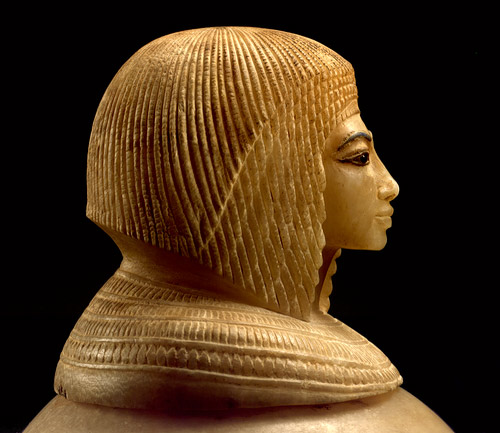
Spinning and weaving are among the oldest and most important Neolithic technologies. If we admit spiders and silkworms to the account, spinning technology is even much older than the Neolithic by millions of years. (Encarta: Spider / Silk). Arachne, the lydian mythological heroine of weaving, gave this animal phylum the name. (Encarta: Arachne), Bachofen (1925: 309, 310). The Greek terms for weaving are histo- / -n / -s , hyphant- / ikae / -ria. Spinning and weaving has mostly been woman's work throughout the ages. An example is given in Illias 1, 31: histon epoichomenaen kai emon lechos antiosan - that she may serve me as weaver and consort for my bed. Homer (1994: I, 4). An important point of this line that is glossed over in most translations (as this one) is that epoichomenaen means literally: {approach / walk around / also, to come near temporally}, and the histon is not only the loom but also the birth-chair. This is reflected by many worldwide examples of mythologies of spinning and weaving women. Bachofen (1925: 309-315). The spinning and the weaving are often connected with highly fateful woman magic and sexual symbolism. In German and English we can find an association in the similarity of the word sounds Weben, Weib, wife, and weaving.”[10]
Delilah’s name has been recently associated with the vamp, harlot and temptress because of her ‘weaving’ abilities. But, was her name Delilah or a title later attributed to her in this story? What was the web or pin she used? This is a sexual allusion as we see above, but here is another point.
Samson the sun-god’s hair or symbol of strength, virility and power is pegged in a web by the harlot or the maiden–which like cutting of the hair, is another form of castration and disconnection to the divine Absolute.
The Egyptian marker:
Timolaus: "But that is a sign of really distinguished birth in Egypt, Lycinus, all freeborn children plait their hair until they reach manhood. It is the exact opposite of the custom of our ancestors who thought it seemly for old men to secure their hair with a gold brooch to keep it in place." (Lucian, Navigations, paras 2-3).[11]
Was another nation invading and subduing the son of the king by instituting the brooch or pin to hold back or castrate their power, knowledge and virility of a sun-godman? Was there an attack on the Egyptian throne and in co-opting the story the Hebrews literalised Sampson?
Locks are a symbol of divine wisdom and should not be relegated as a fashion statement. Plaits are a symbol of an ancient Pharonic household and freedom, as was braids. Everything has a meaning and all meaning originate in Africa. We must hold these traditions near and dear and not cast our pearls before swine.
I have tried to connect the dots to give you all a deeper way of thinking about our overall spirituality and how it manifested itself in our coiffures. The crown on the head was originally the hair. The head represents the seat of the intellect, imagination and spirituality.
When some of our people came off the slave ships we were beaten but unbowed. In the shear inhumanity we experienced, in our eternal glory, we reminded our captors of who we were by weaving our locked hair into crowns!
Happy to be Nappy,
Ekowa
2006

Wheeeeee…